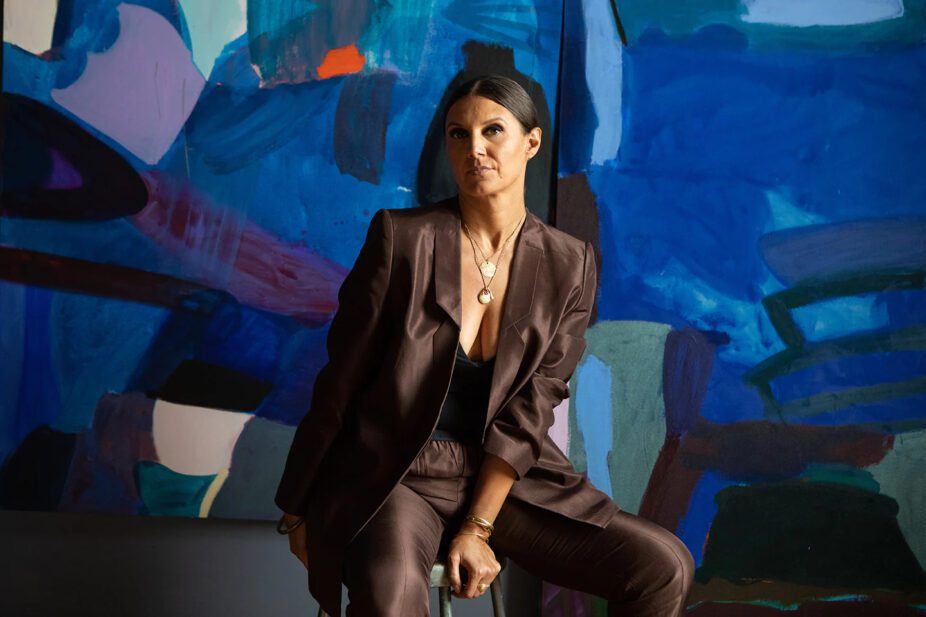Gallery artist Sarah Boyts Yoder was recently interviewed by Danish fashion house MUNTHE for their MUNTHE Art Monday series. Read her interview with them below.
View Sarah Boyts Yoder’s recent and available work here!
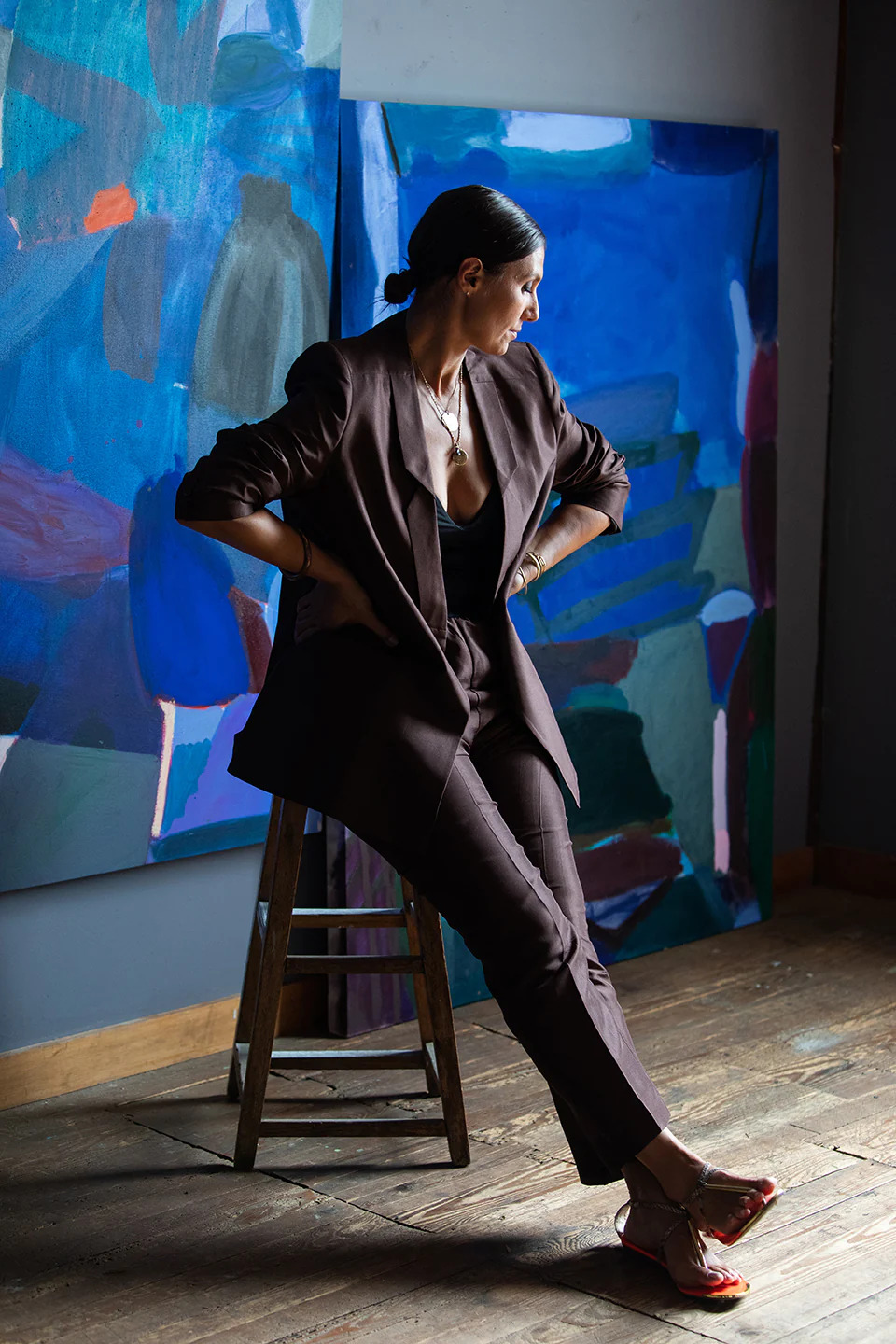
Please introduce yourself and tell us about what you do.
My name is Sarah Boyts Yoder. I am a full-time painter based in Virginia, in the United States. I grew up in Fort Worth, TX as an artistic kid who luckily had good art teachers and encouraging parents. I received an MFA in painting in 2006. Since then, I’ve participated in almost 50 solo and group exhibitions and my work has been featured in numerous publications and corporate and private collections throughout the United States and abroad, including the Virginia Museum of Contemporary Art.
I have been the recipient of a professional fellowship in painting from the Virginia Museum of Fine Arts and have been a fellow at the Virginia Center for the Creative Arts, 100W Corsicana in Corsicana, TX, and at Blue Apple in Cartagena, Colombia. Besides artist residencies and participating in exhibitions, I work full time in my studio and am represented by select galleries in the US.
My abstract paintings are playful refusals of the inevitability and separateness the world all too often insists upon. I use a visual lexicon of symbols I have generated over time. Each work articulates how space constantly extends and collapses all around us and how joyfully form can evade our need for categorization. What emerges are welcoming and engaging spaces for imaginative play, a celebratory take on color and material, and an invitation to open up. In this context, I see the paintings as hopeful, optimistic acts, and the mode of abstraction as a generous state of being.
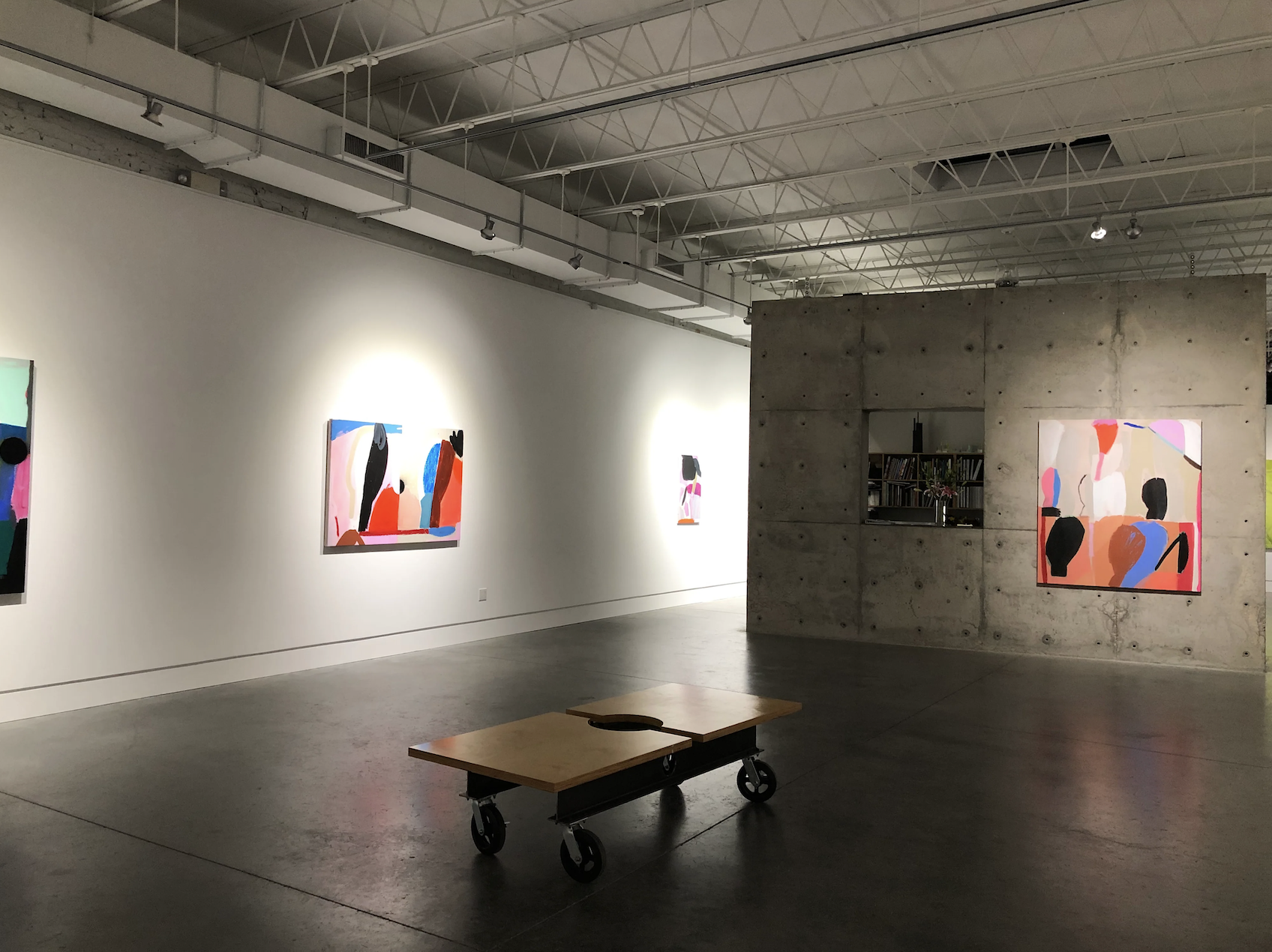
Could you explain more about how being a woman has affected your career?
I am a woman who’s also a mother. This affects everything about my work. Both states of being are binary states of being. And they’re also a total comedy of errors, with positive and negative effects. Structure and improvisation, shape and chaos, innovation and restraint, adherence and aggression.
Having children has taught me that purity and darkness exist together in almost everything, all the time. I’ve learned through experience to not fear pain so much, that pain and joy are inextricably linked.
These attitudes and beliefs I carry with me in the studio and in my life and it has allowed me to take more risks in my work and to be more stubborn. You must work hard to be taken seriously as a female artist, especially if you’re also a mother. That has the potential to make one unyielding and cynical but I’m thankful that that binary state of being I mentioned exists for me because it keeps me open hearted and flexible, despite how stubborn one must be. My sense of humor is intact, and I don’t mind being earnest and showing that I care. I don’t think these qualities are very much respected or fashionable in the art scene at large but they’re how I want to be as I move through the world.
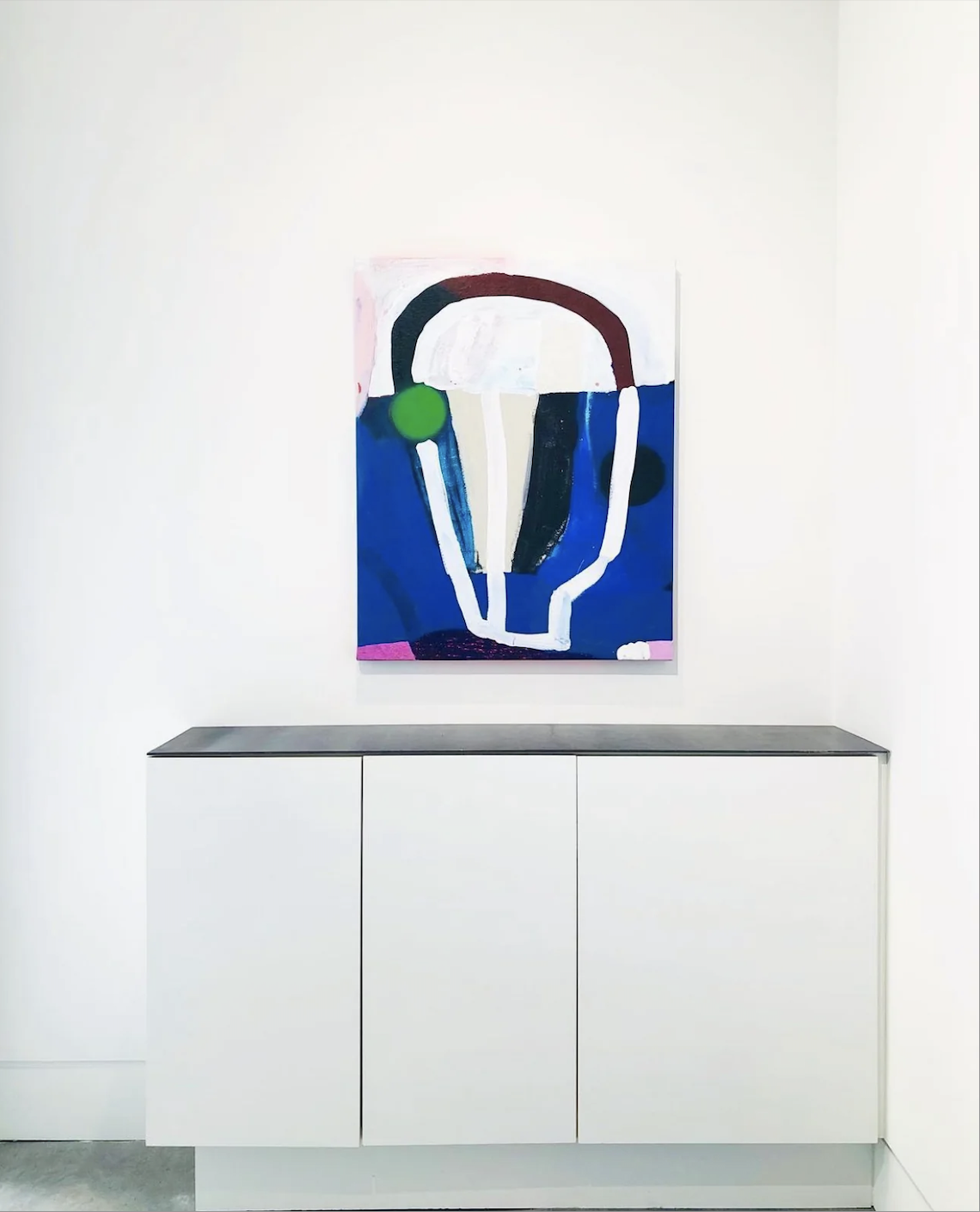
Can you name some other female (artist) that inspires you and explain why they do so?
Elizabeth Murray and Amy Sillman, two female painters I discovered early on, are my early and forever heroines. I felt such connection and relief when I found their work. It really rounded out the big picture. The work of both artists has a sense of humor, sometimes awkward cartoon-like forms that are funny, straightforward (but not too straightforward) and accessible. That was like the missing puzzle piece. They allow one to get close and share in an experience while at the same time acknowledging how absurd and complicated things can be.
Also, this spring I saw Wangechi Mutu’s huge solo exhibition at the New Museum in New York and that really blew me away. I’ve always loved her work and seeing so much of it and across so many mediums illustrated how much she is building and imagining a whole world for herself and us and it was very, very inspiring.
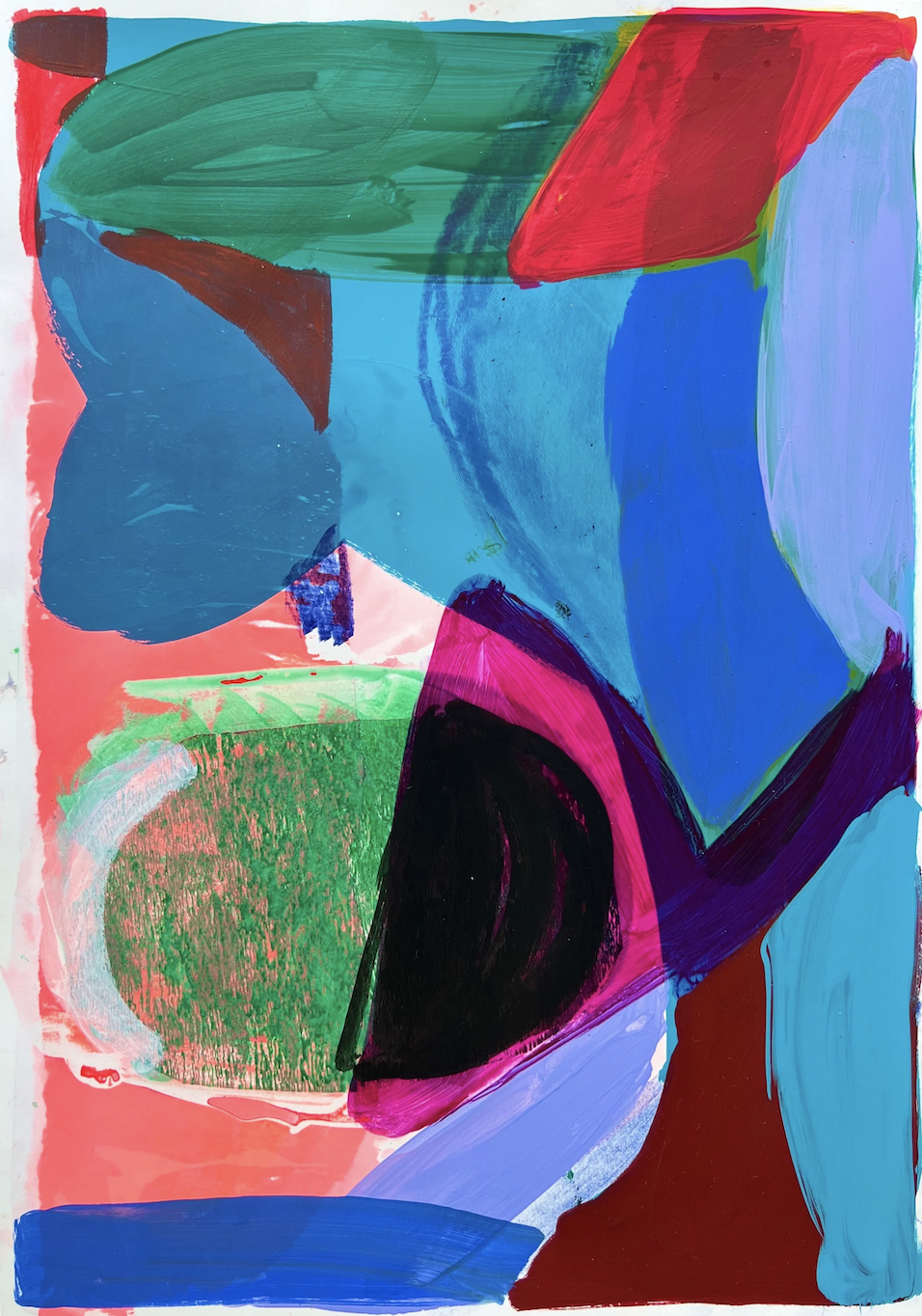
What has been the most challenging aspect of being a female artist?
Doubt, big self-doubt. For lots of reasons women feel this, we all know these details. HOWEVER, I’m always on the lookout for language that is more precise or conversely, more comprehensive. Something that can help us see the positive where we’ve always only seen the negative aspects, not a weakness but a strength, especially about ourselves. When I read the author Ruth Ozeki’s piece entitled Ambivalence in the New York Times Style Magazine in April of this year I found exactly what I needed to rethink my feelings about my own self-doubt.
My experience with self-doubt looks like indecision, freezing, an inability to choose a path and move forward. Ozeki states that ambivalence, “ambi- “meaning “both”, and the root “valentia,” meaning “strength,” denotes the ability to see the strength in the opposing sides of an issue. “Ambivalence is a bifurcation, a splitting of feelings or beliefs, and many writers, particularly women writers, feel pulled in different directions.”
One might still find only weakness here but later in the piece she makes a case in defense of this ‘enemy’, turning it into an ally and an inspiration. When we can see the strength in multiple paths or see multiple solutions to a problem, it forces us to slow down, to ‘recognize and consider the rich and subtle array of ideas, feelings, beliefs, reactions and choices that are possible in any situation.” It also means we must tolerate not knowing for any given amount of time. For me, as a painter, the ability to tolerate this state of being, to stay in that place, means I get to reap big rewards artistically. Every successful painting has grown from the seeds of uncertainty and ambivalence. Asking the question “but what about this?” and then trying it out.
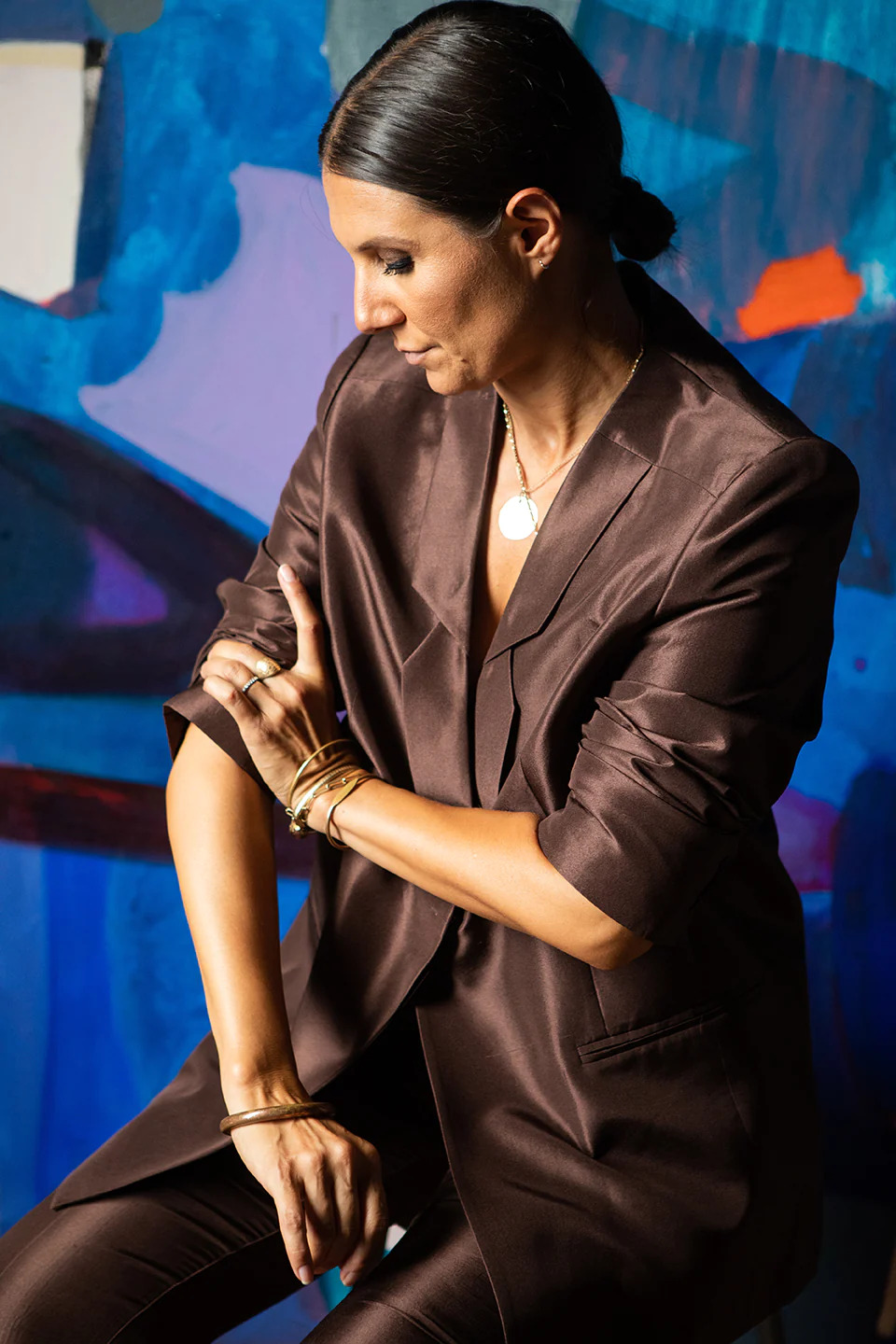
What would you like people to notice in your artwork?
I want people to feel welcomed, invited, magnetized by the color and form in the paintings. To be drawn in and then feel comfortable enough to realize that unknowability can be a source of joy, not of frustration. Our imaginations are our greatest asset as humans, but they need practice, especially now, to function in ways that can most help us. In a fast-moving world that has no time for gray areas or spectrums or indecision, there must be places where one can practice engaging one’s imagination, where one can change one’s mind, where one can open up. We are not locked alone in boxes. When I say in my artist statement that the work, that I, refuse inevitability and separation this is what I mean.
